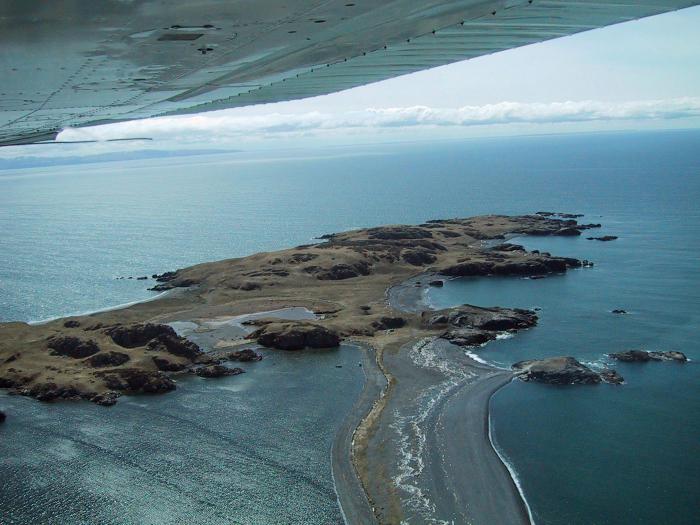Alitak — All’itaq, Alitaq

In the early nineteenth century, Russian traders established a community at the entrance to Olga Creek in southern Olga Bay, known as Alitak. Built on a terrace above the creek’s lagoon, the settlement was a fish processing station, where Alutiiqs worked to preserve salmon under Russian supervision. Historians believe that Alitak was economically attached to the community of Akhiok. Records indicate that operations focused on Olga Creek in the salmon season then moved to Akhiok for the remainder of the year. Following the smallpox epidemic of 1837, thirteen residents of Alitak relocated to the community of Aiaktalik on Aiaktalik Island to the southeast, and it appears that Alitak was never reoccupied.
Today Alitak is best known as the large bay at the southern end of Kodiak Island and the home of Alaska’s largest known assemblage of rock art. At Cape Alitak, Alutiiq ancestors pecked over a thousand images of people, animals, and geometric shapes into shoreline boulders and rock outcrops. These petroglyphs, and prehistoric settlements associated with them, indicate that Alutiiqs hunted and fished from this remote corner of the archipelago for over 3,000 years.
When were the petroglyphs carved and what do they mean? Archaeologists believe that the prehistoric images probably date to the last thousand years of Alutiiq history, based on stylistic similarities between the petroglyphs and other types of Alutiiq art. Their exact function is unknown, but they may have been territorial markers, a form of hunting magic, or a combination of both. Historic sources indicate that whalers made pictures in secluded areas in preparation for the hunt. A number of the petroglyphs show whales, and whalebone is common in some of the nearby settlements. This suggests a tie between the artwork and whale hunting at Cape Alitak.
